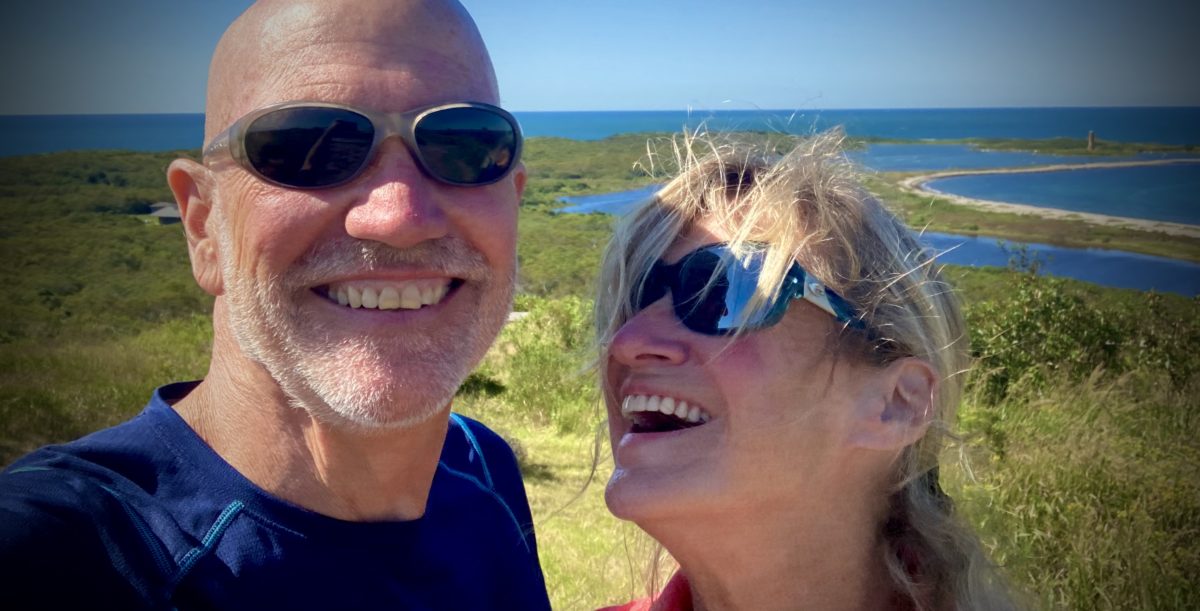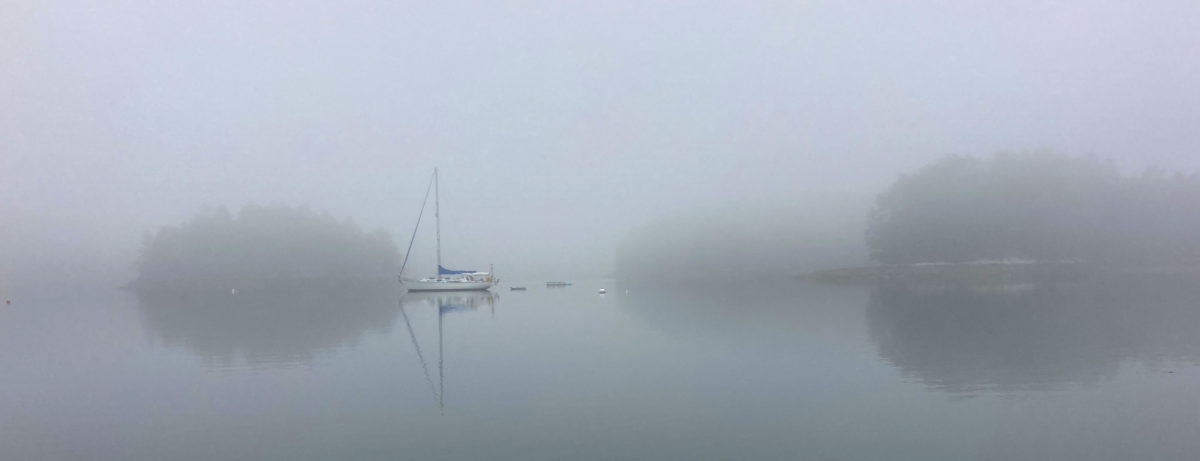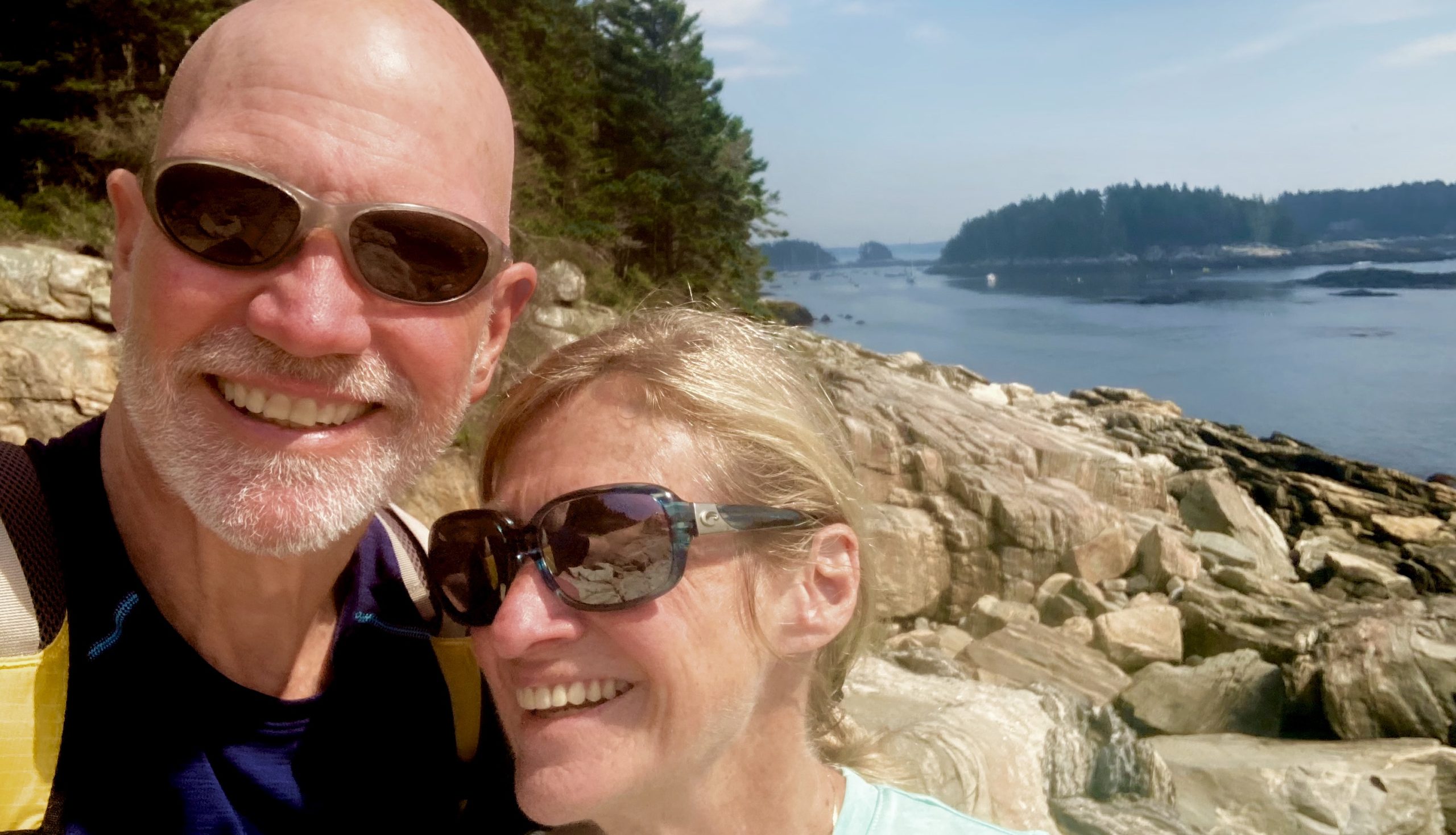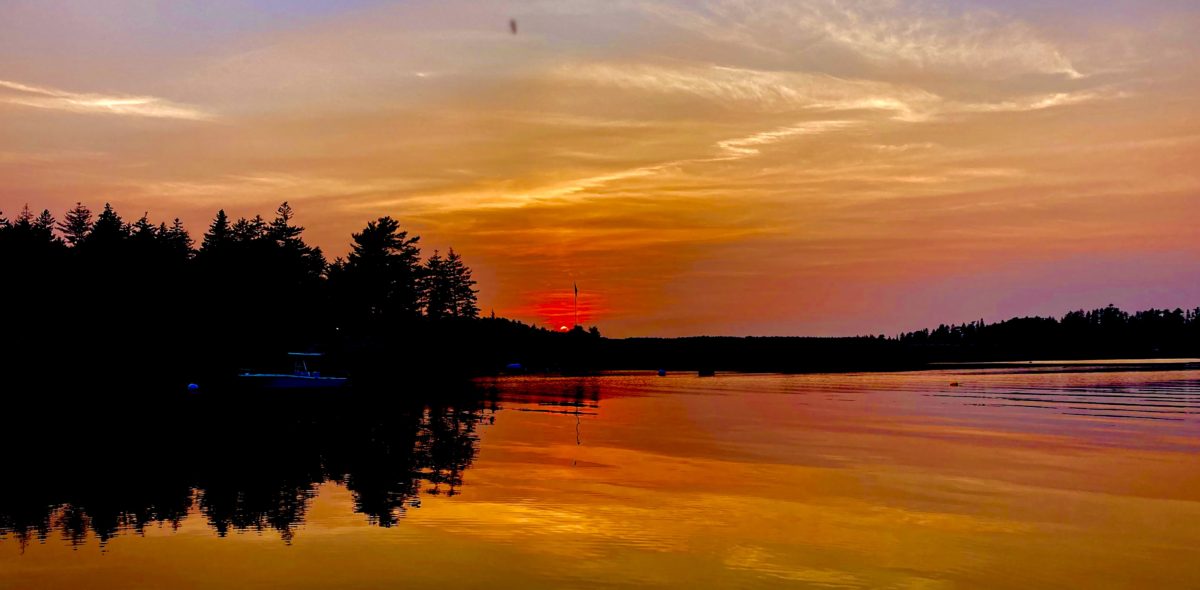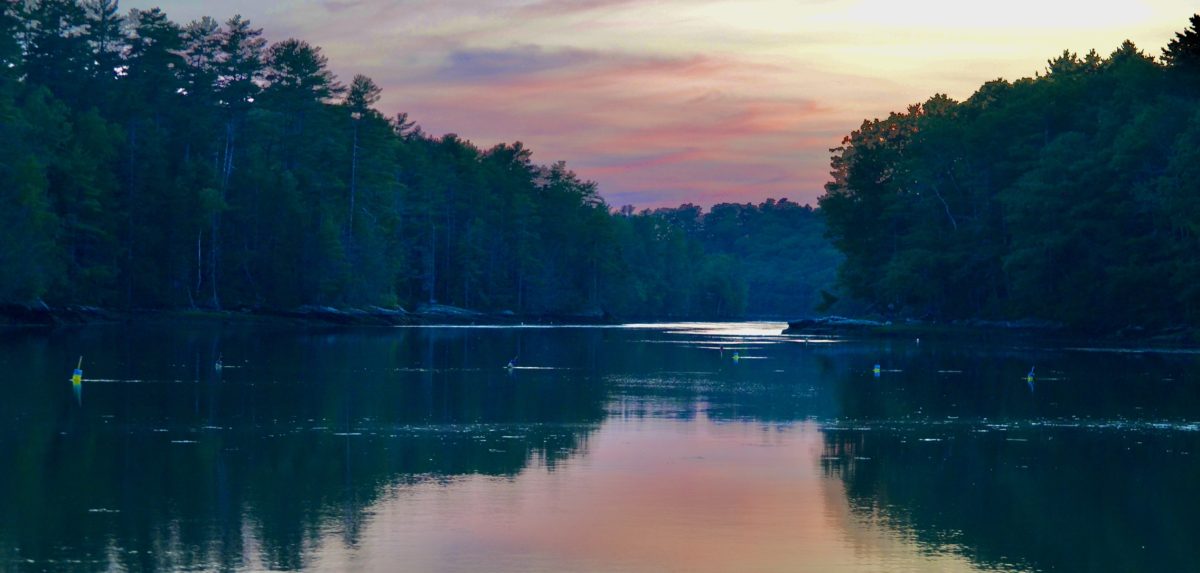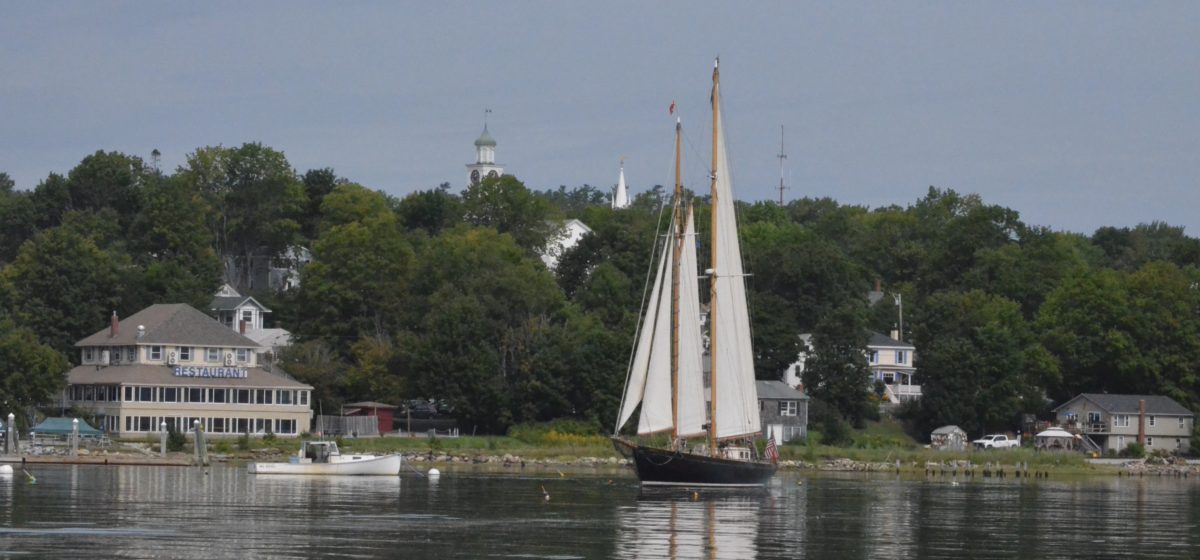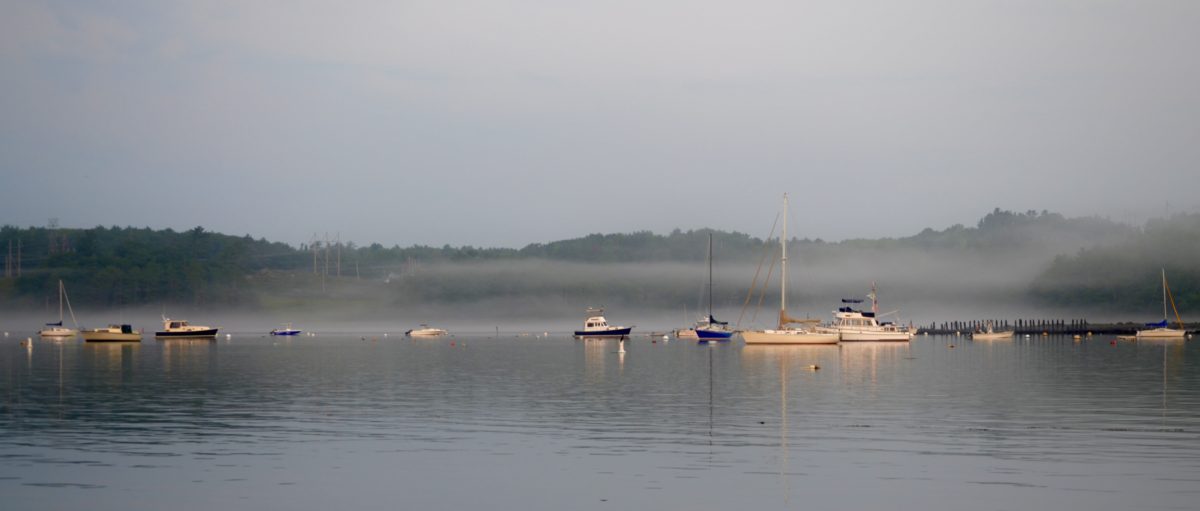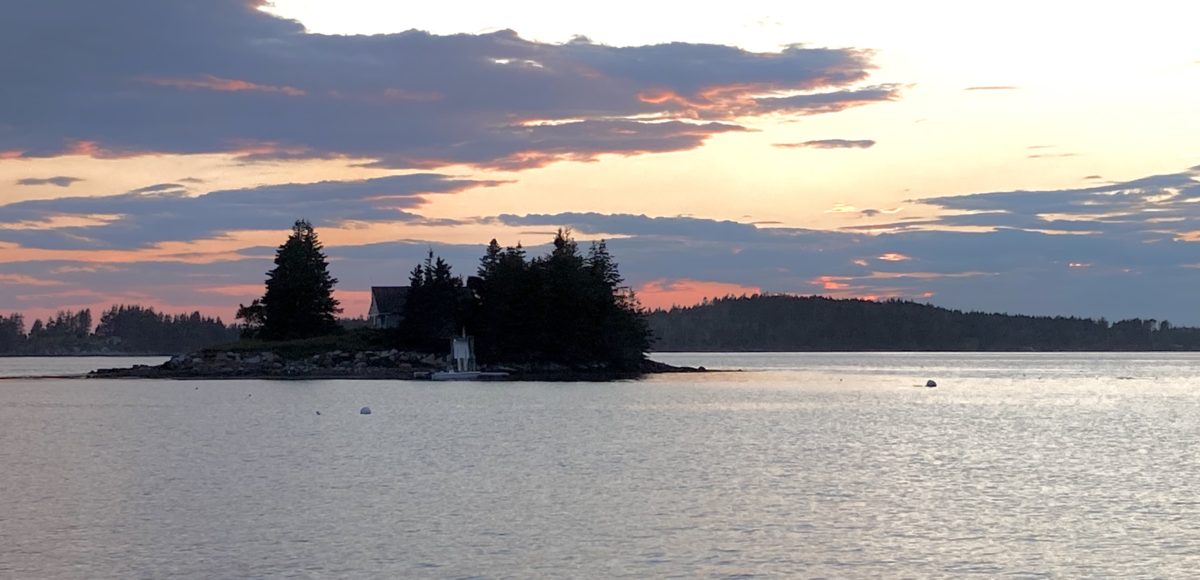 Port Clyde is another one of those places that we’ve just passed by on our previous summers in Maine. A bit out of the way, tucked up into a rocky area, it’s not an easy place to just “stop by.” Its harbor is also only marginally protected with very limited anchoring—if you want to stay in the harbor you’ll need to find a mooring ball.
Port Clyde is another one of those places that we’ve just passed by on our previous summers in Maine. A bit out of the way, tucked up into a rocky area, it’s not an easy place to just “stop by.” Its harbor is also only marginally protected with very limited anchoring—if you want to stay in the harbor you’ll need to find a mooring ball.
After leaving Maple Juice Cove, we dropped anchor on the north side of Hupper Island. This meant we had a five minute dinghy ride to town, but we like dinghy rides. There’s good holding in a little over 20’ MLW.
As much as any town we’ve gone to in Maine, Port Clyde is a fishing village. There’s surely a good deal of tourism in town as well, much of it because this is the ferry landing for the Monhegan Boat Line, but the town retains the strong feel of a small fishing village.
We found decent walking on the roads around town. It’s a modest hike down to Marshall Point Lighthouse where there’s a fun museum and great views. We stopped by Port Clyde Fresh Catch where fresh seafood can be had, but decided against buying anything that day because we had a lot more walking before we headed back to the boat. Our walk took us out along Drift Inn Rd, where we stopped and watched kids and families playing at Drift Inn Beach. It’s a road walk, but traffic is light and respectful.
Several days we walked along Horse Point Rd out to the end of Hupper Point. A road walk again, but traffic is light and respectful. Our walk on most days took us past Collins Park one way or the other, and we enjoyed taking a break and watching local kids making use of the town park. The road beside the park is also the drive down to Dockside Lobster, where the big draw is buying lobster right at the lobster dock, and it seems they’ll ship them for you anywhere.
As far as dining, we stopped and had coffee at Squid Ink Coffee several times, overlooking the dinghy dock. Most days involved a trip to the Port Clyde General Store, where we might buy needed provisions, and a couple times sat down to the counter and had lunch at The Port Kitchen, a great diner right there in the store.
A handful of particularly fun things happened in the week or two that we were anchored at Port Clyde. Each of these little happenings scratched that little vagabond itch inside me—making me appreciate again this wonderful nomadic lifestyle that we’re living.
The Wild Blueberry Walk: Just a day or two after setting our anchor, a young couple rowed their little boat out to us and struck up a conversation. They were staying at one of the little cabins there on Hupper Island. Their family owned the cabin, and different family members spent varying parts of the summer there. They invited us to use their shoreline too beach the dinghy to walk ashore and explore the island. They even disclosed a couple of their secret blueberry gathering spots, inviting us to help ourselves to this quintessential wild Maine delicacy. Of course, we took them up on their offer and spent a morning enjoying this typical Maine island, accessible only be water, with cabins on the perimeter against the shore, and the interior wooded trails with no real roads. I love it when the human instinct to welcome nomads kicks in, and we are able to meet great people.
The Lobster Boys. I don’t know the economics that drive the lobster fishing industry. I know that it can be lucrative, as we’ve noticed some beautiful large estates on shore a few times with a couple lobster boats docked there. Add to that the fact that there are so many lobster buoys in Maine waters, and so many fishermen, and basic logic tells you that a whole lot of folks have decided that it’s a pretty good living. And my hat’s off to them—it’s hard and demanding work, and whatever they make they work hard for. Now I tell that much to set the stage for the story.
We regularly saw a couple teenage boys in a small runabout checking their traps. Their boat was not an expensive one, and very much a contrast to the big and expensive lobster boats we were accustomed to seeing. This seemed very much like a couple of enterprising young men who were willing to work hard and invest in their future. After watching them for a couple days we decided that when we wanted lobster, we’d flag them down in our dinghy and pay them cash for a couple bugs.
Christine and I like lobster, but it’s not the same delicacy for us that it is for some people. It’s good for sure, and we enjoy it when we get it, but it’s just not a big deal to us. Really good scallops, or clams, or haddock is more likely to get us excited than a lobster. All that to say that we’ll buy lobster in Maine because it’s less expensive and abundant, but when we do buy it we like buying directly from the fisherman with cash. In the case of these young fellas, breaking their rhythm to sell us a couple of their catch was something they were happy to do, and we loved helping them in their business venture.
The Kelp Farmer: There was a mooring ball at one end of the anchorage where we dropped our hook. For the first couple days I thought that there was some debris hung up on the mooring ball, but then I noticed that the debris was growing in size. After studying it through the binoculars, it was apparent that this “debris” was actually elongated mesh bags of something, apparently tied together.
After a couple more days, we observed a very odd looking small vessel approach the ball and add yet more mesh bags to the growing collection. We asked someone locally about it, and they told us that this was a kelp farming operation. This odd vessel goes out and harvests kelp, then bags it into these mesh bags. When he has enough, he drags the bags to shore where they are somehow loaded onto a truck and taken to whoever buys bags of kelp.
Cool operation, but I wonder how many times a boat has run over his bags of kelp in low visibility, not knowing to stay clear of the mooring ball?
Outward Bound Kids: And finally a story about Outward Bound. First off, I love the Outward Bound program. Both my sons participated in an extended program when they were in high school, and I believe it was an experience that had a big impact in their lives. When I was just out of college, I worked as a counselor in a program very much like Outward Bound, and experienced first hand how much positive influence these kinds of programs can have in the lives of young people.
South of Port Clyde, out where Muscongus Bay meets the Gulf of Maine, is Burnt Island. Apparently this island is the departure point for a course called “Maine Coast Sailing.” (At least this is the assumption I’m making based on a couple of brief exchanges with some students in the course.) The course puts a bunch of students on a 30’ sailboat with oars, a rudder, and a square sail. The spend a week or two on this boat together, exploring the Maine coast. It’s an open boat with no protection from the sun, wind or rain. There’s no propulsion. There’s no head. The students sail or row, living together on a crowded boat for a week or two.
Our interaction with the first group we came across began one afternoon when we saw them slowly making their way toward our anchorage. A local resident came out and offered them the use of his mooring ball, a convenience that they jumped at. At first I wasn’t sure just what to make of this crowded little boat, and wondered if it was an Outward Bound group. We watched that afternoon and evening as they settled down for the night. They looked to be practicing knots and having class. Then as night fell they all wrapped up in their bags and settled in for some sleep. They were pretty packed in to this small boat, and sleeping obviously meant reaching accommodation with each other to find reasonable comfort for everyone. The next morning we watched the boat slowly come to life as they took turns at their daily ablutions, dressing, and hanging bits out to dry.
Watching this process required care. I wanted to respect their privacy, averting my eyes when privacy seemed appropriate, but I also wanted to watch and learn. Such an amazing exercise in civility, and the need for everyone to respect and care for everyone else. They were all in the same boat, and the boat wasn’t a big one. There wasn’t room to behave as-if you had unlimited space or resource, and in order to continue to move the boat forward to the next destination everyone had to respect one another, make room for one another, and yield to one another’s needs with the understanding that they would yield to your needs when the time came.
I propose that all members of Congress should be required to take this course before going to DC. Just a thought…
At any rate, we stopped and had a brief chat with them across 40’ of water as we dinghied to town that morning, and by the time we returned they had departed. We saw them (or another class) out on the bay in the next couple days, and we saw one of their classes making their way east from Burnt Island a week or two later.
The Moon: Finally, on one of our final nights at Port Clyde, we watched one of the most spectacular moonrises I’ve ever seen. I tried taking some pictures, but of course they never turn out as well as the event itself. It was an ideal close to a wonderful week or two at a gem of a place along the Maine coast.
